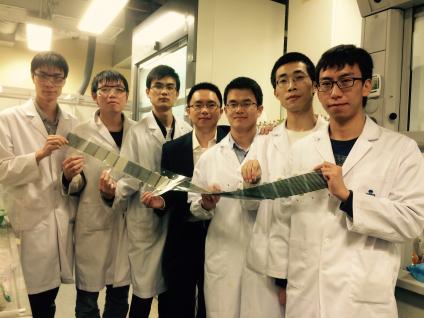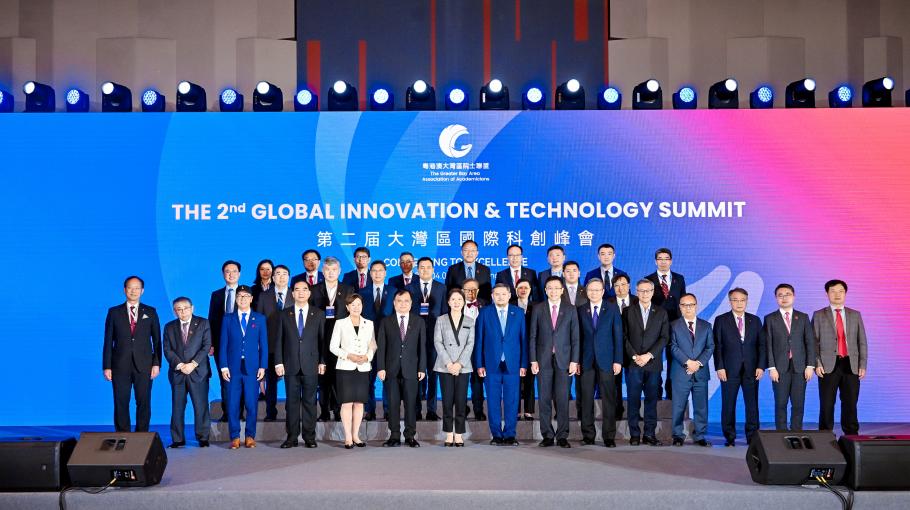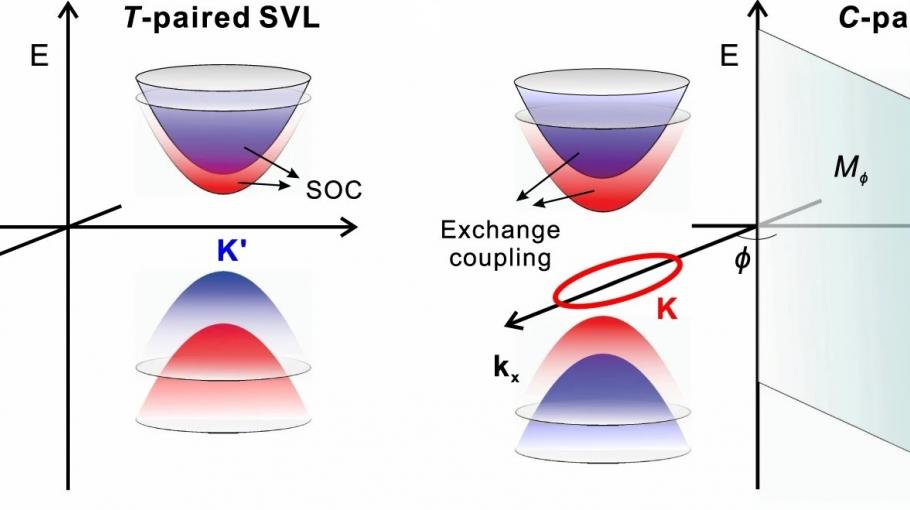A research team at the Hong Kong University of Science and Technology (HKUST) has developed a family of polymer and fullerene materials that enabled multiple cases of high-efficiency polymer solar cells. The team, led by Prof He Yan of the Department of Chemistry, discovered a material design motif that led to three new polymers and over ten high-performance material combinations yielding solar cell efficiencies of up to 10.8%, a new record for single-junction polymer solar cells.
Polymer solar cell technology is low cost and environmentally friendly, allowing solar panels to be produced using high throughput roll-to-roll printing methods similar to those used to print newspapers. Polymer solar panels are also light in weight and exhibit excellent mechanical flexibility (shown in the picture on the right) and can thus be used to charge mobile devices such as smart phones and laptop computers. Despite recent progress in the polymer solar cell field, several limitations are holding back its development. For instance, the field lacks an effective approach to controlling the polymer:fullerene blend morphology that is critical to achieving high solar cell performance.
In a paper published recently in Nature Communications, Prof Yan and collaborators from North Carolina State University, Prof Harald Ade and Dr Wei Ma, show that the temperature dependent aggregation properties of the polymers is the key to creating highly efficient polymer solar cells that can be mass produced relatively cheaply. These findings open the door to experimentation with different chemical mixtures that comprise the active layers of the cells. Prof Ade’s group specializes in characterizing polymer:fullerene morphology using various advanced X-ray techniques, and has found that the HKUST polymers enable a new “near-optimal” morphology that is distinctively different from that formed by previous state-of-the-art materials.
“Materials development efforts for polymer solar cells generally have low success rates, with limited choices of polymers and essentially only one fullerene yielding >9% cells,” Prof Yan comments. “Since we achieved our first 10% efficiency polymer in September 2013, we have applied our material design motif and developed two other polymers and numerous fullerene materials with great performance. We hope that our material development success and the morphological insights will inspire others to explore many more polymer:fullerene blends, further increasing the efficiency of solar cells, decreasing their production costs and leading to a commercially viable alternative source of energy.”
Besides achieving 10.8% efficiency polymer solar cells, Prof Yan’s group achieved record efficiencies in other sub-categories of organic solar cells, including polymer or small molecule acceptor based organic solar cells with efficiencies of up to 6.3%, a record for the sub-category. Innovations in new acceptor materials have greatly broadened material choices for organic solar cells and will facilitate the development of high-efficiency, low-cost solar cells in the long run. Three important papers describing these results have been published in the high-impact journals Advanced Materials and Energy and Environmental Science.
Prof Yan graduated from Beijing University and obtained his PhD at Northwestern University in 2004. Before joining HKUST in 2012 he was a research group leader at Polyera Corporation, a leading company in the organic electronics industry. Dr Yan’s most important achievement at Polyera was the development of the first high-mobility n-type semiconducting polymer, with the findings published in Nature in 2009. The research received the Best Organic Material Award at the Printed Electronics conference in 2010.
For media enquiries, please contact:




